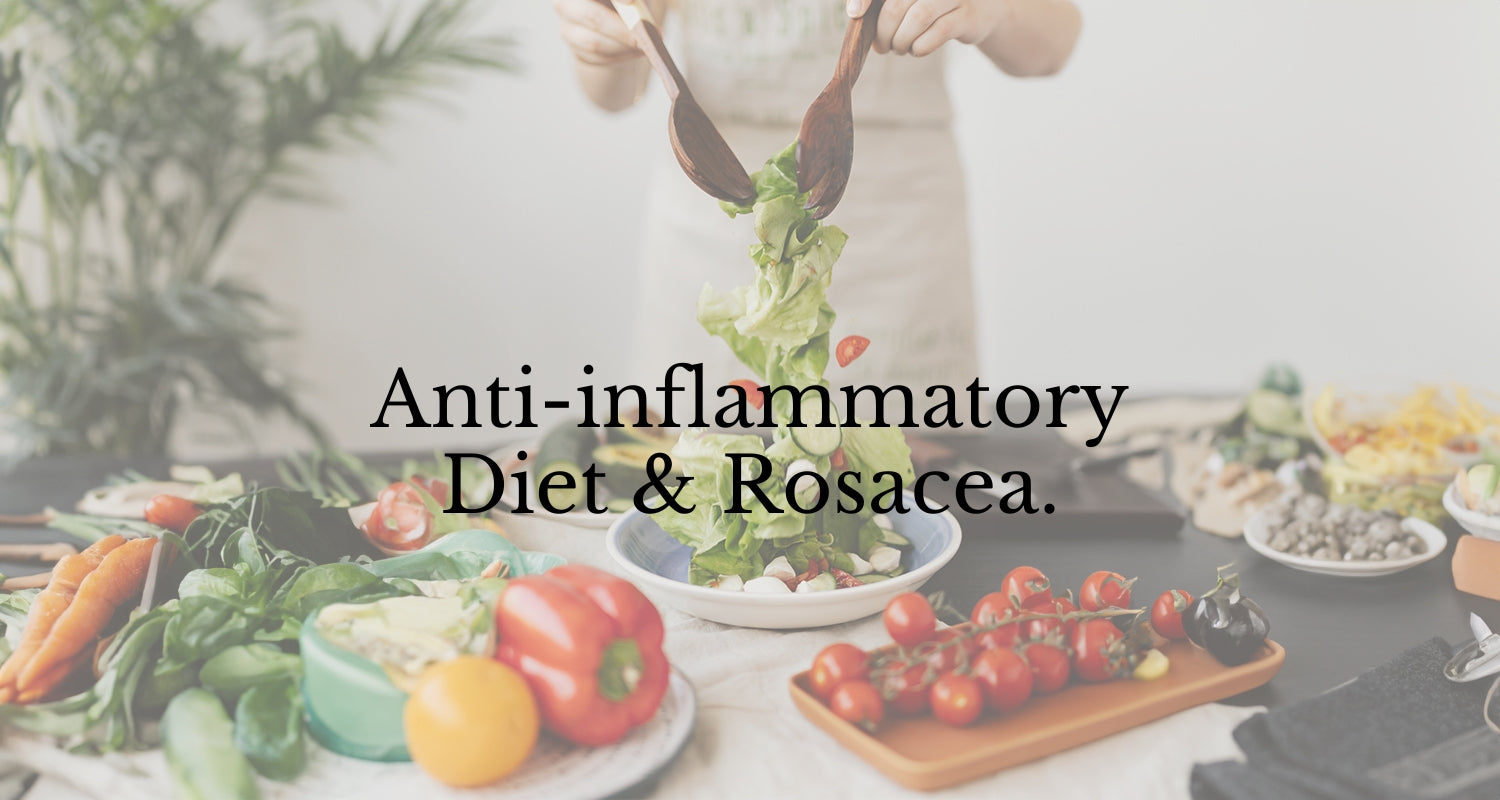
Anti-inflammatory Diet & Rosacea.
Rosacea, an often distressing and psychologically debilitating skin condition affects an astounding 16 million or 5 percent of Americans. And if you believe recent reports from the National Rosacea Society (NRS) the figures may be even worse. In a Harvard Medical School study NRS researchers found a prevalence rate for rosacea of 16 percent in Caucasian women and an overall rosacea incidence of nearly 10 percent in a total population that also included Hispanics, African-Americans, Asians and Indians.
Rosacea, a Latin term that can be defined as “rose-colored”, shows up as redness on the cheeks and nasal area although it sometimes involves oily skin, at which point it acquires the moniker “seborrhea”. In some especially unfortunate patients blemishes and pustules can form and the skin around the nose can become thickened. Even more disturbing is rosacea that affects the eye, a condition that can result in ocular dryness grittiness and burning sensation. Still despite it’s appearance, rosacea is best thought of not as a skin or eye problem but rather as a circulatory one. This should be obvious as the dilated blood vessels that are the featured characteristic of the rosacea patient, are located not on top of the skin but rather in the blood vessels located in the deeper tissues below.
Still, dermatologists and estheticians as well as their patients address the surface of the skin as the main target of therapies to alleviate the distressing ruddiness of rosacea. If you go to a skin care professional to treat the condition more than likely you’re going to leave with a prescription or suggestion for a topical cream or lotion, most often an antibiotic and occasionally an anti-inflammatory steroid. Sometime laser therapy is suggested and occasionally exfoliation and skin peels are used. Recently a pharmaceutical company called Foamix announced with great fanfare the results of a study on a new product called FMX 103 that showed a “statistically significant” reduction in lesions and pustules of rosacea patients. FMX 103 is a patented foaming, retooled version of minocycline, an old-time antibiotic that has been used to treat various skin conditions for 50 years.
The problem with the use of topical treatments for rosacea is that they, like most medical interventions, do not deal with the causes of the condition. And, because the disease involves internal biochemical breakdowns, not addressing these internal mechanisms that lead to the sur-face symptomology can have ramifications for the patient’s future health. Some non-dermatological health issues that can develop in the rosacea patient over time include allergies, respiratory diseases, gastroesophageal reflux disease (GERD), diabetes, urogenital diseases, and female hormone imbalances. Other recent studies have found increased risks of inflammatory bowel disease and brain cancer and recently, according to an article published in the journal “The Dermatologist” researchers announced that individuals with rosacea are at greater risk for dementia and Alzheimer disease.
Because rosacea involves blood vessel dilation, a red flag indicator for blood-borne toxicity, the first place to look for a cause is the digestive tract. Unless substances are injected or otherwise enter into the circulation through the skin (as in through wounds or burns) the intestine is always the likely port of entry into the blood as one of its major roles of the is to effectively facilitate the movement of substances into the circulation. And significantly, as all rosacea pates know, the flushing that is associated with the condition can be dramatically increased by the ingestion of certain substances in including tea, coffee, alcohol, dairy, legumes, grains and spicy meals
Thus the most important anti-rosacea strategy is to look for digestive allergies or intolerances and eliminate problem foods. Caloric restriction and fasting can reduce the burden on the intestine and may be helpful. Use probiotics and fermented foods to restore intestinal bacterial flora (interestingly, the anti-biotics so often used to address rosacea can have negatively impact gut bacteria). Because rosacea can be linked to low stomach acid, use apple cider vinegar, betaine HCL and perhaps prescribed hydrochloric acid drops (available through compounding pharmacies) before meals. Beginning meals with bitter substances like radishes, arugula or dandelion greens can improve secretion of digestive juices.
Other ideas for the rosacea patient…
Avoid refined sugars and carbs, they exacerbate inflammation and can stimulate the production of skin oils.
Because emotional stress can cause inflammation and induce vasodilation, use relaxation strategies, massage, deep breathing techniques and hot baths can be especially useful.
Hyperbaric oxygen therapy (HBOT), a procedure which utilizes a special chamber to drive high pressure oxygen in to the blood might help. Dr. Julian Whitaker, MD reported that one of his patients cleared up her rosacea after one HBOT session. And according to a June, 1972 article published in the British Journal of Dermatology, in 6 separate dermatological cases in which previous methods of therapy were unsatisfactory HBOT treatment led to successful outcomes. Many hospitals have hyperbaric oxygen chambers that are available to the public and independent treatment centers can be found in most big cities.
Vitamin B2 (riboflavin) supplements may be helpful. A March, 1943 paper published in the British Journal of Ophthalmology found that 32 of 36 patients dealing with rosacea of the eye “had prompt healing of the corneal lesions -usually within four days.”. Try 100-200 mg of riboflavin daily taken with the entire B-complex.


